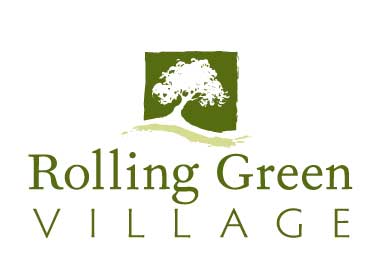What Retirement Community is Right for you?
If you’re considering a move to a retirement community, you may be wondering which type of community is right for you. To help answer that question, we explain two types of senior living communities in the following paragraphs: rental retirement communities and continuing care retirement communities aka Life Plan Communities.
As you’ll discover, it’s not an apples-to-apples comparison. Both have their pros and cons. But what’s important is that you understand the differences so you can make an informed decision about your future.
What is a rental retirement community?
Rental retirement communities are the most popular senior living option.
They typically offer independent living and provide a variety of services and amenities, including meals, housekeeping, maintenance, transportation, fitness classes, lifelong learning, and a full calendar of activities. The amenities and services provided are included in your monthly service fee.
Do rental communities provide health services?
Some rental communities offer assisted living and/or memory care on-site.
Whether the community offers assisted living in the resident’s independent living apartment or in a separate building on-site, residents pay market rates for the health services they use.
If you need to move to a higher level of living, such as assisted living or memory care, it’s important to realize a place may not be available when you need it.
That’s because there’s no contractual obligation for a rental community to provide this care, so you may have to move out to get the care you need.
What about entrance fees?
On the upside, no large entrance fee is required at a rental retirement community. Residents are generally required to sign a one-year lease and pay a one-time community fee, which is minimal compared to an entrance fee at a Life Plan Community.
Another reason people find rental communities attractive is that there are no medical or financial eligibility criteria to meet. If you have a preexisting condition, or if the financial commitment at a Life Plan Community is more than you want to make, a rental community may be a good option.
What is a Life Plan Community?
A Life Plan Community, also called a continuing care retirement community (CCRC), is designed to help residents thrive in a friendly, supportive community setting. In addition, residents have a plan in place for where they’ll live and who will care for them as their health needs change. In short, residents can age in place at a Life Plan Community.
You’ll typically find a wider choice of living options at a Life Plan Community, including free-standing cottages, villas, townhomes and apartment homes. Life Plan Communities also tend to offer a greater variety of services and amenities than those found at a rental retirement community. Casual and fine dining options, a fitness center and pool, auditorium, library, art studio, woodworking shop, resident gardens, plus a full calendar of activities, classes, events and outings are standard at most Life Plan Communities. Here is a link to a video about the benefits of a Life Care Plan.
What health services are available at a Life Plan Community?
The biggest difference between rental retirement communities and Life Plan Communities is the continuum of care. The continuum of care ranges from independent living to assisted living to skilled nursing and rehabilitation. Some Life Plan Communities, including Rolling Green Village, also offer memory care.
If you or your spouse needs, say, assisted living or round-the-clock nursing care, you can get it right on campus. Unlike a rental retirement community, residents of Life Plan Communities have guaranteed or priority access to the care they may need. Knowing they’ll be cared for in a familiar place gives residents and their families peace of mind. Friends, family and couples can remain close, even if one person requires a higher level of care.
What costs can you expect at a Life Plan Community?
There are two financial components with most Life Plan Communities: the entrance fee and the monthly fee.
Entrance fee: This is a one-time fee paid when you move into the community. It’s based on the size of the residence you choose and whether it will be just you or you and your spouse living in that residence. A portion of the entrance fee may be refundable.
Monthly fee: This helps pay for the services and amenities at the community. Depending on your contract, the monthly fee may or may not increase substantially if you move to a higher level of living.
Types of contracts at a Life Plan Community.
Most Life Plan Communities will offer one or more of the following types of contracts:
Type A: Residents will pay roughly the same monthly fee regardless of the level of care that is needed.
Type B: Residents receive either a discount on future health care charges or a limited number of free days of health services, but their monthly payments will still rise as their needs increase.
Type C: Residents generally pay a lower monthly fee for independent living but will pay full per diem rates for higher levels of care. Rolling Green Village offers this type of fee-for-service contract.
Questions? We’re ready to answer them.
Planning a move to a senior living community is an exciting prospect. But it also comes with a lot of questions. That’s where we can help. Contact us, and we’ll get back to you with answers. The more you know about your senior living options, the easier it will be to find the right community for you.



